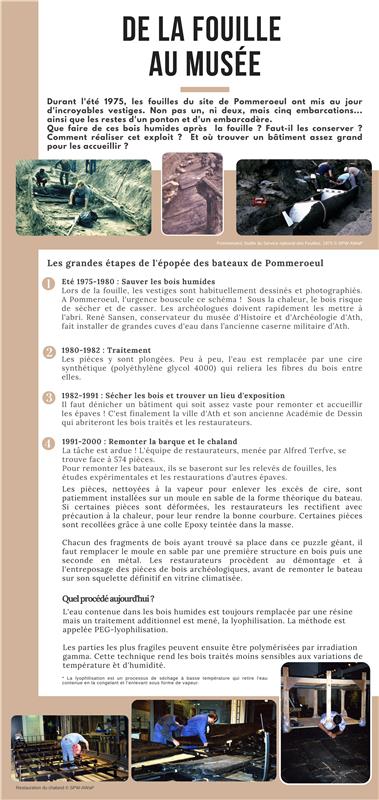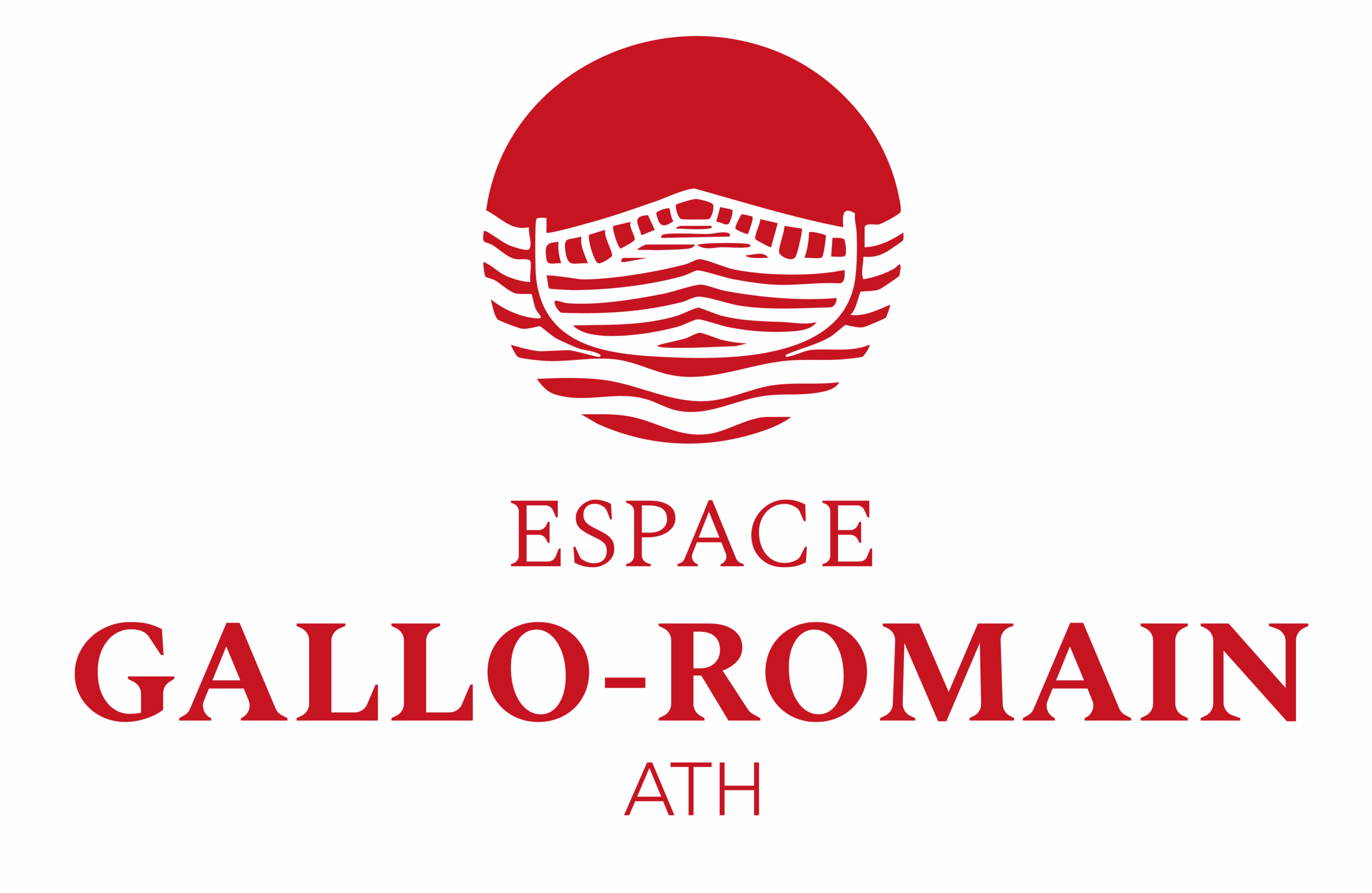In the summer of 1975, excavations at the Pommeroeul site revealed incredible remains. Not one, not two, but five vessels… along with the remains of a pontoon and a landing dock.
What should be done with this waterlogged wood after excavation? Should it be preserved? How can that be achieved? And where can a building large enough to house them be found?
The major stages in the journey of the Pommeroeul boats
- Summer 1975–1979: Saving the waterlogged wood
During excavation, remains are usually drawn and photographed. In Pommeroeul, urgency disrupted this routine! Under the heat, the wood risked drying out and cracking. The archaeologists had to act quickly. René Sansen, curator of the Museum of History and Archaeology in Ath, had large water tanks installed in the former military barracks in Ath. - 1980–1982: Treatment
The pieces were submerged. Gradually, the water was replaced with a synthetic wax (polyethylene glycol 4000) that bonded the wood fibers together. - 1982–1991: Drying the wood and finding an exhibition space
A building large enough to reassemble and house the wrecks had to be found! The city of Ath and its former Drawing Academy were eventually chosen to host the treated wood and the restoration team.

- 1991–2000 : Reassembling the dugout canoe and the barge
The task was daunting! The restoration team, led by Alfred Terfve, faced 574 individual pieces.
To reconstruct the boats, they relied on excavation records, experimental studies, and the restoration of other wrecks.
The pieces were cleaned with steam to remove excess wax, then carefully placed in a sand mold of the boat’s theoretical shape. Warped pieces were gently heated and reshaped. Some elements were glued back together using colored epoxy adhesive.
Once each wooden fragment found its place in this giant puzzle, the sand mold was replaced with a wooden frame, followed by a metal structure. The team then disassembled and stored the archaeological wooden elements before reassembling the boat on its final climate-controlled display mount.
What method is used today?
The water in waterlogged wood is still replaced with resin, but an additional treatment is now applied : freeze-drying. This method is called PEG freeze-drying.
The most fragile parts can then be polymerized using gamma irradiation. This technique makes the treated wood less sensitive to fluctuations in temperature and humidity.
* Freeze-drying is a low-temperature drying process that removes water by first freezing it and then turning it into vapor.
Photo credits
Pommeroeul, excavation by the National Excavation Service, 1975 © SPW-AWaP
Restoration of the barge © SPW-AWaP

Recent Comments